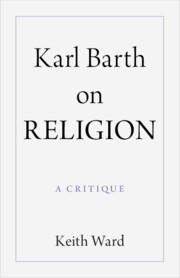Refine search
Actions for selected content:
58 results
14 - Atonement
- from Part II - Theological Themes
-
-
- Book:
- The Origins of Scholasticism
- Published online:
- 18 November 2025
- Print publication:
- 08 January 2026, pp 388-412
-
- Chapter
- Export citation
Ambiguous Debts
-
- Journal:
- Ethics & International Affairs / Volume 39 / Issue 3 / Fall 2025
- Published online by Cambridge University Press:
- 03 December 2025, pp. 215-229
-
- Article
-
- You have access
- Open access
- HTML
- Export citation

The Origins of Scholasticism
- Theology and Philosophy in Paris, 1150–1250
-
- Published online:
- 18 November 2025
- Print publication:
- 08 January 2026
Inventing atonement: Faustus Socinus, John Owen, and the birth of a doctrine
-
- Journal:
- Scottish Journal of Theology / Volume 78 / Issue 4 / November 2025
- Published online by Cambridge University Press:
- 11 November 2025, pp. 330-344
- Print publication:
- November 2025
-
- Article
-
- You have access
- Open access
- HTML
- Export citation
13 - Christology and the Atonement
- from Part IIIa - Christology and Systematic Theology
-
-
- Book:
- The Cambridge Companion to Christology
- Published online:
- 15 September 2025
- Print publication:
- 02 October 2025, pp 219-233
-
- Chapter
- Export citation
A match made in hell: Luther and Calvin on the descensus ad inferos
-
- Journal:
- Scottish Journal of Theology / Volume 78 / Issue 4 / November 2025
- Published online by Cambridge University Press:
- 04 September 2025, pp. 345-356
- Print publication:
- November 2025
-
- Article
- Export citation
‘[F]or hys ennemyes’: Katherine Parr’s Use of Romans and Doctrine of Christ’s Work in The Lamentation of a Sinner
-
- Journal:
- Journal of Anglican Studies , First View
- Published online by Cambridge University Press:
- 18 August 2025, pp. 1-9
-
- Article
-
- You have access
- Open access
- HTML
- Export citation
Chapter 2 - Sin, Sacrifice, and Atonement (Leviticus 1–7, 16)
-
- Book:
- The Theology of the Book of Leviticus
- Published online:
- 18 July 2025
- Print publication:
- 07 August 2025, pp 32-82
-
- Chapter
- Export citation

The Theology of the Book of Leviticus
-
- Published online:
- 18 July 2025
- Print publication:
- 07 August 2025
6 - Guilt Beyond Philosophy’s Limit
- from Introduction to Part III: Synthesis and Atonement
-
- Book:
- Rethinking Criminal Justice
- Published online:
- 17 May 2025
- Print publication:
- 05 June 2025, pp 129-148
-
- Chapter
- Export citation
7 - Two Accounts of Guilt in Freud
- from Introduction to Part III: Synthesis and Atonement
-
- Book:
- Rethinking Criminal Justice
- Published online:
- 17 May 2025
- Print publication:
- 05 June 2025, pp 149-167
-
- Chapter
- Export citation
10 - God’s Unbreakable Purpose
- from Part III - Reconfiguring the Story
-
- Book:
- Constructing an Incarnational Theology
- Published online:
- 09 January 2025
- Print publication:
- 23 January 2025, pp 244-281
-
- Chapter
- Export citation
6 - Personal Salvation
- from Part II - Paul Tillich and Personal Salvation
-
- Book:
- Salvation in the Block Universe
- Published online:
- 09 January 2025
- Print publication:
- 23 January 2025, pp 184-206
-
- Chapter
- Export citation
Introduction
-
- Book:
- Twentieth-Century Literature and the Aftermath of War
- Published online:
- 20 December 2024
- Print publication:
- 09 January 2025, pp 1-36
-
- Chapter
- Export citation

Karl Barth on Religion
- A Critique
-
- Published online:
- 14 November 2024
- Print publication:
- 21 November 2024
‘He laid His hand upon both’: Self-punishment, vicarious punishment and Gregory's spirituality of the cross in the Moralia in Job
-
- Journal:
- Scottish Journal of Theology / Volume 77 / Issue 4 / November 2024
- Published online by Cambridge University Press:
- 18 October 2024, pp. 362-374
- Print publication:
- November 2024
-
- Article
- Export citation
Intercession and Anamnesis in the Eucharist
-
- Journal:
- Journal of Anglican Studies / Volume 23 / Issue 1 / May 2025
- Published online by Cambridge University Press:
- 27 March 2024, pp. 227-241
-
- Article
-
- You have access
- Open access
- HTML
- Export citation
Chapter 4 - “What is ynogh to mene”
-
- Book:
- The Theology of Debt in Late Medieval English Literature
- Published online:
- 04 January 2024
- Print publication:
- 18 January 2024, pp 112-135
-
- Chapter
- Export citation
Repentance, Atonement, and Aquinas
-
- Journal:
- New Blackfriars / Volume 105 / Issue 1 / January 2024
- Published online by Cambridge University Press:
- 26 January 2024, pp. 61-76
- Print publication:
- January 2024
-
- Article
- Export citation
Chapter 3 - Sacrifice
- from Part I - Developing Ideals
-
- Book:
- Imagining War and Peace in Eighteenth-Century Britain, 1690–1820
- Published online:
- 10 January 2024
- Print publication:
- 23 November 2023, pp 75-99
-
- Chapter
- Export citation
